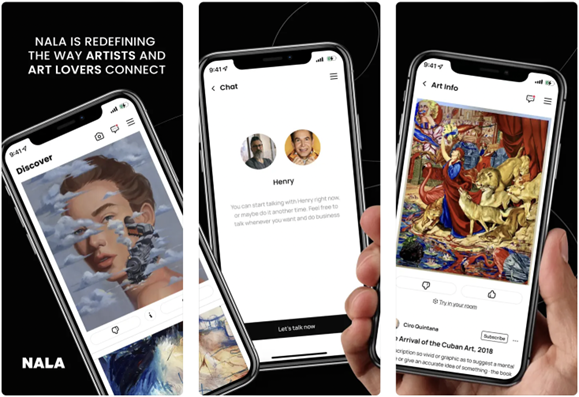The Art Of Algorithms: How NALA Helps Artists And Art Lovers Curate Meaningful Connections

Data filtering tools leveraging machine learning (ML) algorithms have been revolutionizing the business and tech industries for years. Benjamin Gulak, a professional painter, entrepreneur, and computer scientist, made it his mission to ensure that the impact of these cutting-edge technologies reaches the art sector. He envisioned a platform that would reshape the art industry by facilitating direct connections between artists and enthusiasts worldwide to democratize access to art.
Ben turned this vision into reality by developing the Networked Artistic Learning Algorithm (NALA), an innovative platform that bridges the gap between artists, and art lovers. NALA boasts a state-of-the-art recommender engine built upon the world's largest fine art database. The hybrid recommender employs collaborative and content filtering in addition to deep learning algorithms to find patterns from various data sources (i.e., in-app user activity, global market trends. etc.).
NALA is the only art platform leveraging an intelligent recommender engine powered by data science and sophisticated algorithms. These algorithms analyze vast amounts of data to understand individual preferences and recommend artwork tailored to each user's unique tastes. They also take into account various factors, such as demographic information, browsing behavior, past purchase history, and even contextual cues, to deliver personalized recommendations that resonate with the user.

Many might ask, "How do recommender engines work?" It all starts with the data. Over the past several years, NALA has been collecting all publicly available fine art data on the internet. NALA compiles this into a single cohesive multi-dimensional model that can capture the nuances of individual works of art. This model serves as the foundation for the recommendation system. As new artists join and upload artwork, NALA fits them into the model and as art lovers interact with art on their feeds, the artists most similar to their preferences are shown first, increasing the likelihood of a match and transaction.
One of the many advantages of NALA is its ability to continuously learn and adapt over time. Users interacting with the platform provide feedback on suggested artworks through likes, shares, and purchases. It then gathers valuable insights that further refine the recommendations. This process allows the system to become increasingly accurate and effective at matching users with artists.
With NALA, artists can showcase their work and reach potential buyers. They can gain visibility and exposure to a targeted audience more likely to appreciate their creations. This targeted approach increases the likelihood of making a sale. It also builds a deeper connection between artists and collectors, given that they are brought together by shared aesthetic preferences and interests.

"We start by engaging with art lovers through a series of questions to understand their initial preferences. Then, much like any discovery engine, we start showing them images we believe will suit their tastes. As the art lover interacts within the app, liking, disliking, or even just lingering on a specific image, NALA learns by looking at all the metadata behind each image (The tags, materials, media, colors, price of the art, themes, etc.) For each work of art, we have over 20 unique identifiers that are analyzed and tracked. Our goal is to not overwhelm users with endless scrolling like other platforms. We curate highly personalized feeds that evolve and get smarter with each interaction," the founder supplied. "This process is what makes NALA so innovative and exceptional. We want to avoid analysis paralysis and help buyers find the art they'll love quicker."
Ben added, "Unlike major platforms that primarily collaborate with galleries, which represent just a fraction of artists, less than two percent, NALA democratizes the process of art acquisitions. Our platform has already helped over 9000 artists be discovered from over 140 countries."
With this, NALA drives a shift in the broader art market thanks to its innovative integration of new technologies and data science. The platform positions itself as a pioneering force in the art world as it redefines art curation and acquisition with the help of machine learning algorithms, paving the path toward a more connected, inclusive, and dynamic artistic community.
© Copyright IBTimes 2024. All rights reserved.




















